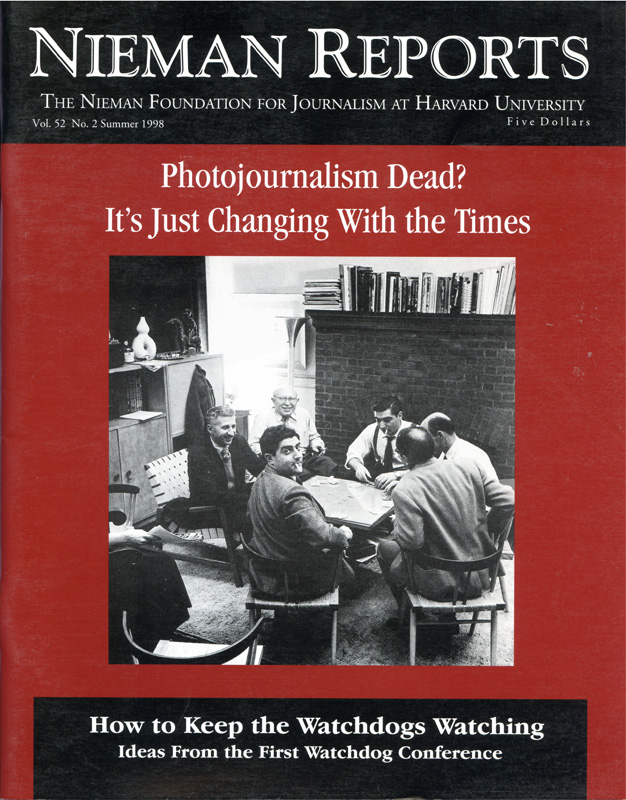In 1986, during the state of emergency in South Africa, South African photographer Peter Magubane and I had been hidden under the seat of a taxi-combi that took us into a black township off-limits to the press. We went there to photograph a funeral for several black children killed in a confrontation with the police. A family smuggled us into their house, and fearful that the police were coming, insisted on hiding our cameras. From behind opaque drapes, I could see the South African Army arrive and use horsewhips to slash up and down elderly black men and women seated in front of the coffins, unable to get up and run from the terror. I had no camera with which to register this blatant attack on their dignity. This image still burns in my psychic archive. My images are my weapons against such atrocities and on that day I was without my arm.
The Best Picture I Never Took
Photojournalism Dead? It's Just Changing With the Times
In the next 50 pages Nieman Reports take stock of photojournalism today. While problems are noted, the report is positive. The articles and the photo essays by 10 Nieman Fellows demonstrate the special value of pictures to news. As noted photographer Edward Steichen summed it up at the dinner celebrating his 90th birthday in 1969: “The mission of photography is to explain man to man and each man to himself. And that is no mean function.”



